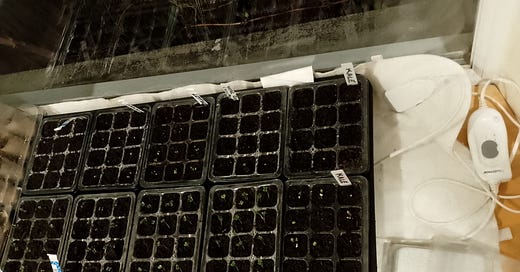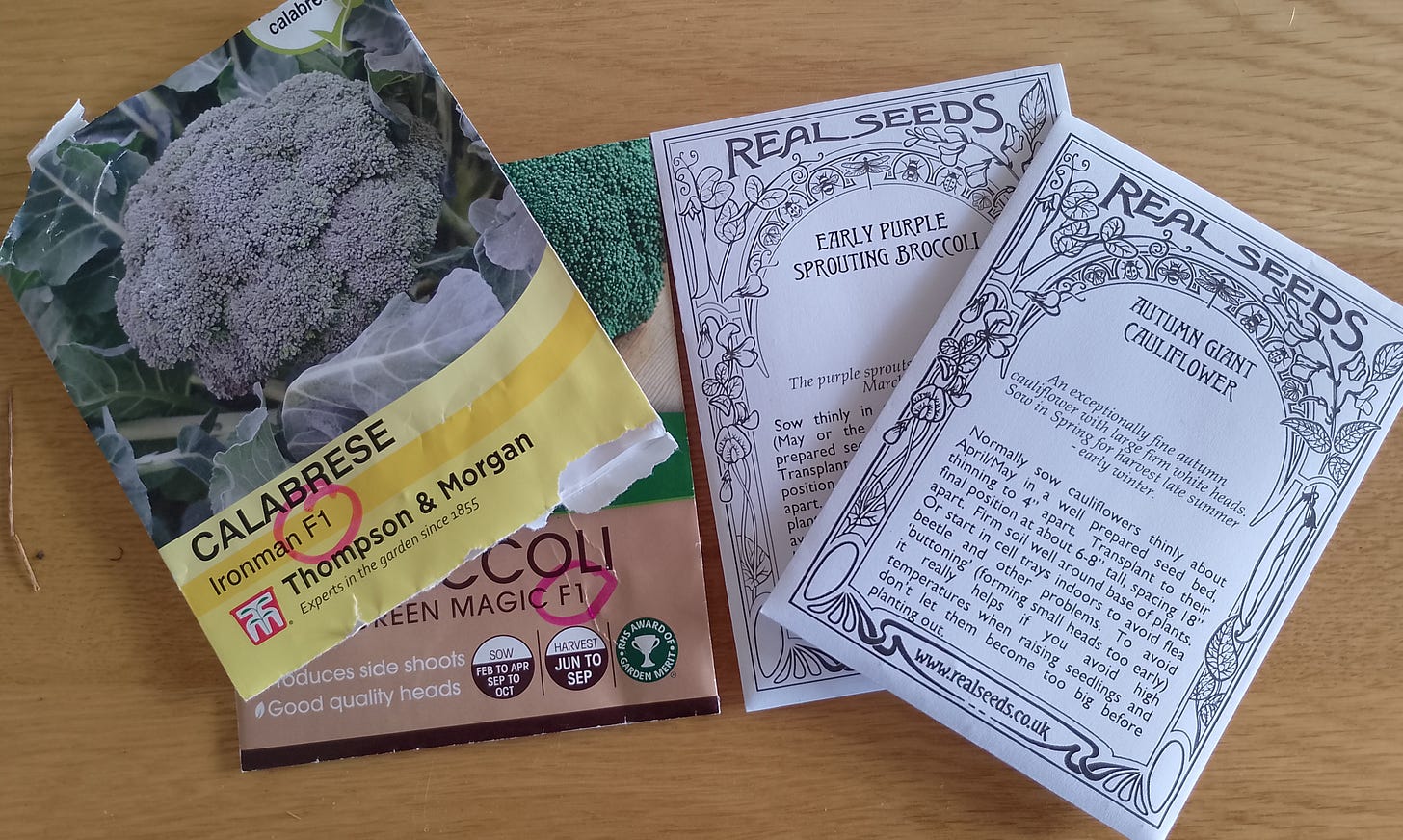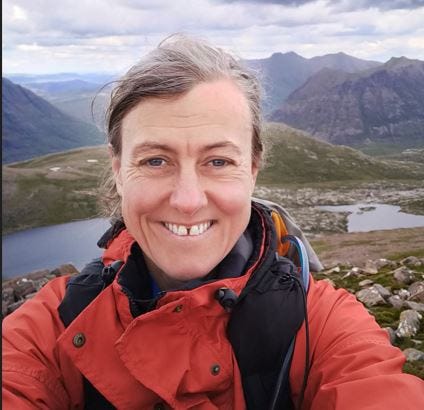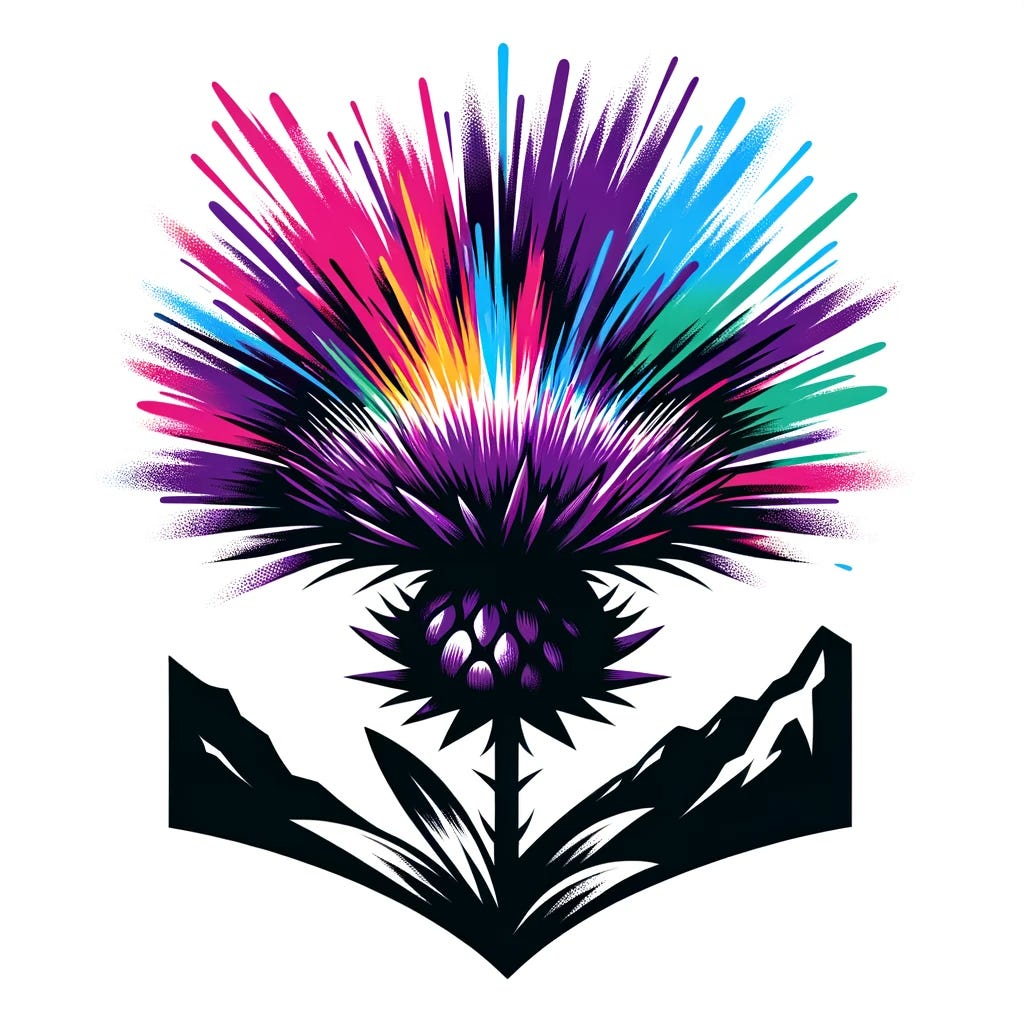A Growing Tradition - Part 1
Imogen explores seeds and the grass roots movement of seed libraries in tackling biodiversity loss.
The electric blanket that kept me warm through winter now has a different purpose. Folded across my windowsill, it gently heats trays of seedlings, their tiny green spears just breaking through the soil, reaching for the surprisly strong spring light. They bring me as much joy this changing season as the birds outside my bedroom window, their dawn chorus growing louder each day as the days lengthen. There is something deeply reassuring in this ritual, watching life return, coaxing new plants into being with the simplest of elements: warmth, moisture, patience, light. It’s a ritual as old as agriculture itself, yet every year, it feels like magic.
Seeds have existed for over 400 million years, when early plants adapted to drier climates by developing pollen-producing stamens and ovule-bearing structures, allowing fertilisation to occur without direct water contact. The evolution of seeds gave plants a distinct advantage over spore-based reproduction, which required water for fertilisation.
This initially led to the emergence of gymnosperms, ‘naked seeds’, that developed on cones, such as conifers. These are some of the most ancient of seeds still in existence today. Later, angiosperms (flowering plants), evolved, encasing their seeds within a fruit, which aided in dispersal and led to an explosion of plant diversity.

Each seed carries within it’s compact casing everything it needs to grow. A delicate embryo (the beginnings of a new plant, it’s blue-print written into its DNA) is cradled in a nutrient-rich store of energy, called the endotherm, and encased in tough outer coat designed to withstand knocks and damage to it’s embryo.
Seeds can remain dormant for long periods, waiting for the right conditions to germinate. Some seeds have been found in ancient tombs, germinating after millennia in the dark! Others are stored in vaults beneath the Arctic ice at Svalbard Global Seed Vault being kept safe in case we need them to rebuild lost crops or repair damaged ecosystems.
No wonder it all seems like magic, seeds, after all, are tiny miracles.

The Evolution and Erosion of Seed Saving
For as long as humans have cultivated the land, they have saved seeds. For over 4,000 years the simple act of setting aside seeds from one year’s harvest to plant the next has been one of the oldest agricultural traditions. Farmers in Mesopotamia, China, and the Andes developed sophisticated seed-saving techniques, preserving plant varieties that best suited their climate and soil.
However, the rise of industrial agriculture in the 20th century disrupted this tradition. Hybrid seeds, designed for uniformity and commercial scale, became dominant, and laws restricting the sale and in some places even the exchange of unregistered seeds further eroded traditional seed-sharing networks. F1 Hybrids do produce seed, but you will be unlikely to get good cropping results from the offspring, as you will do from heirloom varieties adapted to the local climate. This makes seed saving from F1 hybrid plants pretty pointless. Today, a handful of corporations control the majority of the global seed supply, reducing biodiversity and making farmers more dependent on patented seed varieties.
The seedlings on my windowsill aren’t the only seeds I have. Tucked away in paper envelopes are heirloom variety seeds saved from last year - vegetables I grew, and seeds from wildflowers like red campion which florishes here and which I have collected from my garden. More than I will ever need to sow. But seeds are meant to be shared and I intend to share these.
For centuries, that’s exactly what people did. Seeds were passed between neighbours, traded at markets, carried across landscapes and through generations. But over time, that connection has faded. A handful of corporations now control most of the world’s seeds, and rules and regulations have made it harder to freely exchange traditional varieties.
Yet, just as seeds persist, so too does the practice of saving and sharing them. Across the world, people are reclaiming the right to grow, swap, and protect the diversity of our crops. And here in the Highlands, something is beginning to take root.

In Part Two, we’ll explore the new seed libraries emerging in Wick, Dingwall, and Caol - places where anyone can borrow a seed, grow it, and return seeds from their harvest to keep the cycle going. A simple act, but one that reconnects us with our food, landscapes, and the wildlife that depends on them.
Because every seed holds a story, and some stories are meant to be shared.
Imogen Furlong, the High Life Highland Countryside Ranger Manager, is known for her enthusiasm, organisation, and drive. Her deep passion for the Scottish Highlands' wildlife and extensive experience in outdoor education and recreation management have been central to this role. Imogen is a practical and collaborative project manager, empowering her teams to work effectively in communities and contribute to local conservation efforts.







